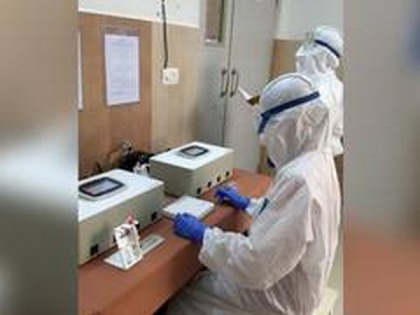340 different COVID-19 tests approved so far in US
By ANI | Published: March 10, 2021 07:12 PM2021-03-10T19:12:02+5:302021-03-10T21:34:44+5:30
340 different coronavirus tests have so far won emergency use authorisation (EUA), including one that can be used at home without a prescription to detect the virus, the Food and Drug Administration (FDA) has said.

340 different COVID-19 tests approved so far in US
340 different coronavirus tests have so far won emergency use authorisation (EUA), including one that can be used at home without a prescription to detect the virus, the Food and Drug Administration (FDA) has said.
"The Cue COVID-19 Test for Home and Over The Counter (OTC) Use is a molecular test that can be used completely at home without a prescription by people with or without COVID-19 symptoms. It requires the use of a compatible smartphone and a downloadable app. The app provides testing instructions and works with the Cue Cartridge Reader (provided separately) and the Cue testing cartridge to perform the test. Results are available in about 20 minutes," the FDA official statement, released on March 9, read.
"As of today, 340 tests and sample collection devices are authorised by the FDA under EUAs. These include 253 molecular tests and sample collection devices, 72 antibody and other immune response tests and 15 antigen tests," it further stated.
There are 38 molecular authorisations that can be used with home-collected samples, including the first at-home test that can be used without a prescription. There is one molecular prescription at-home test, two antigen prescription at-home test, one OTC at-home antigen test and one OTC molecular test, FDA said.
Molecular or PCR tests, which detect genetic material in the coronavirus, are the most accurate but can take several days to process. In contrast, antigen tests can deliver results in as little as 15 minutes by detecting certain proteins from the virus, but sometimes fail to detect active infections, according to media reports.
( With inputs from ANI )
Disclaimer: This post has been auto-published from an agency feed without any modifications to the text and has not been reviewed by an editor
Open in app